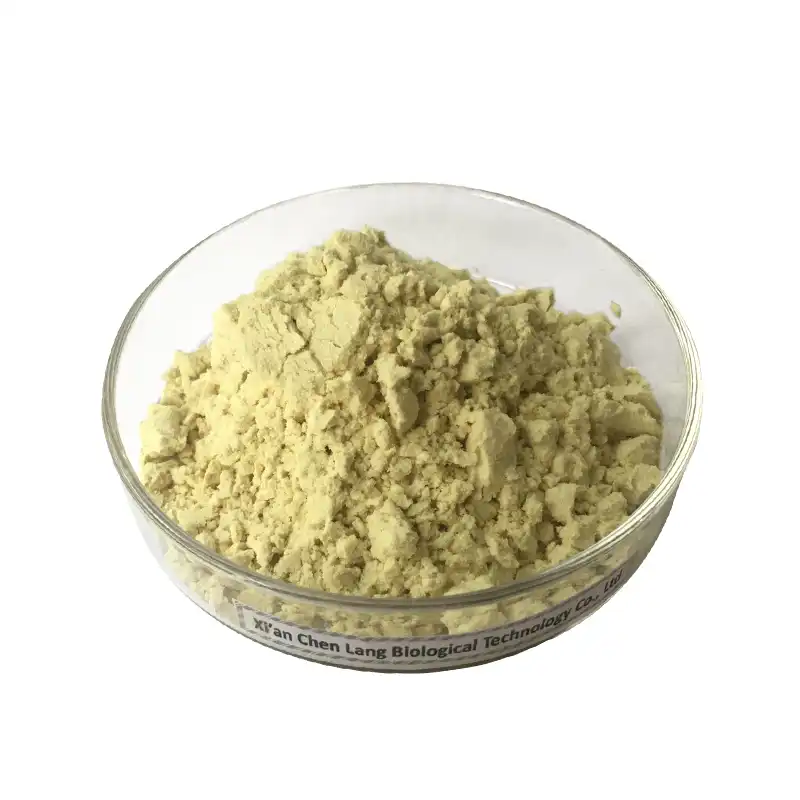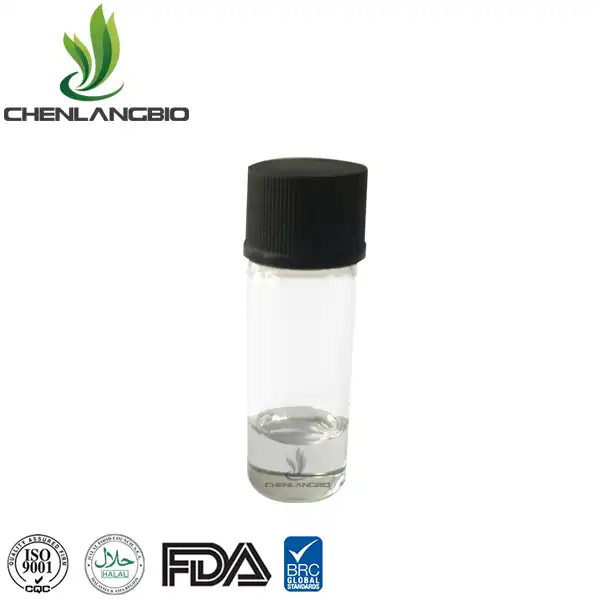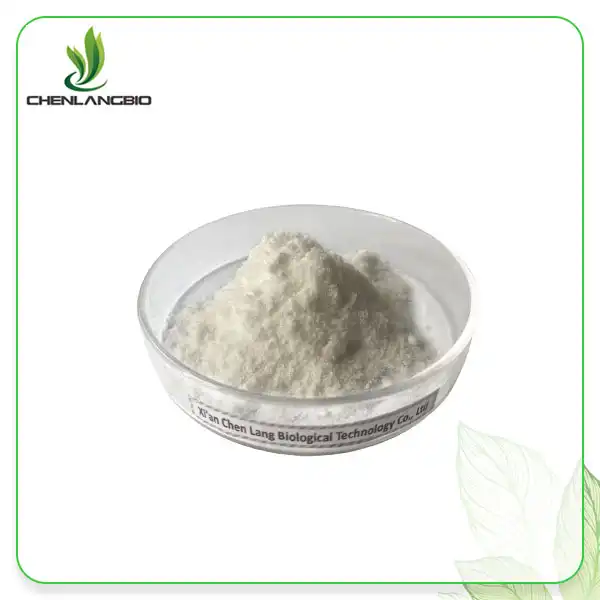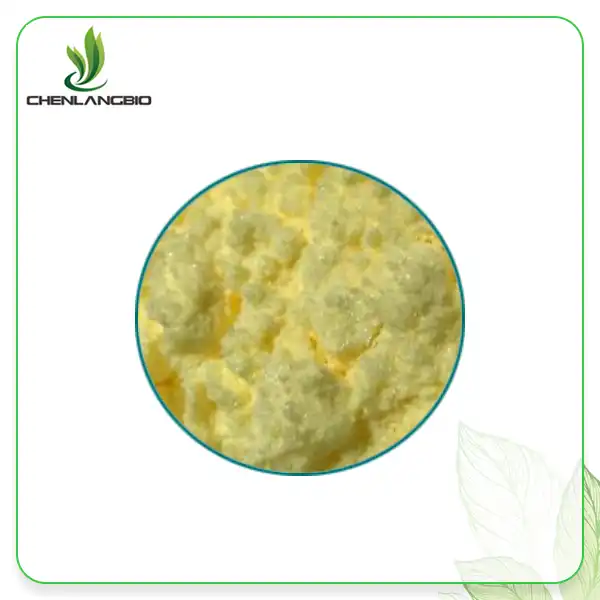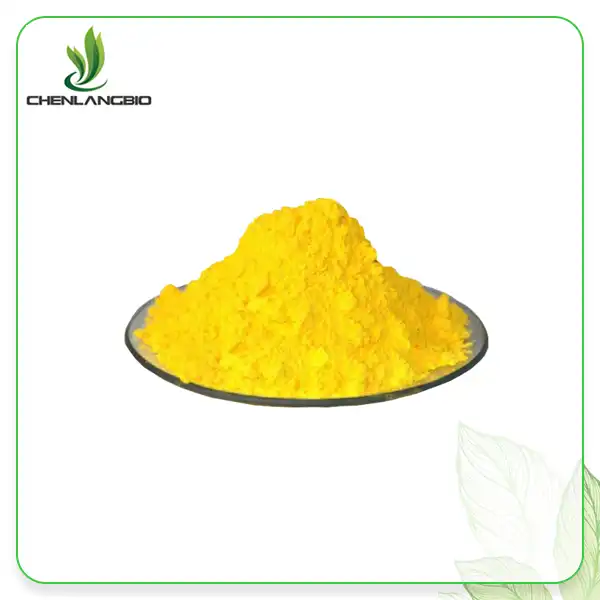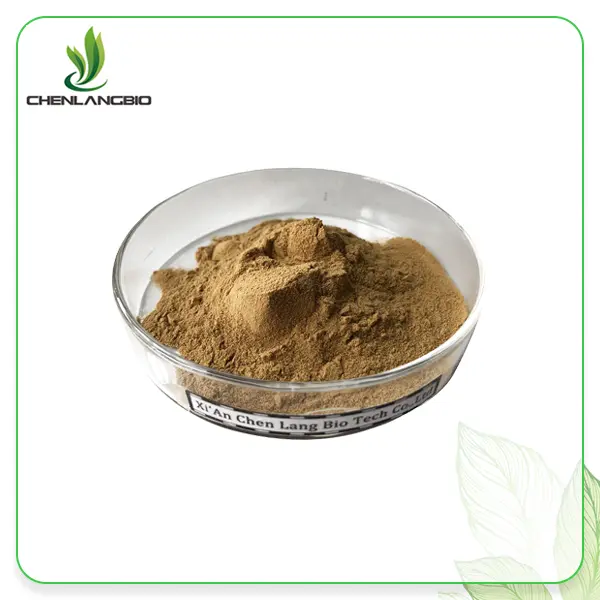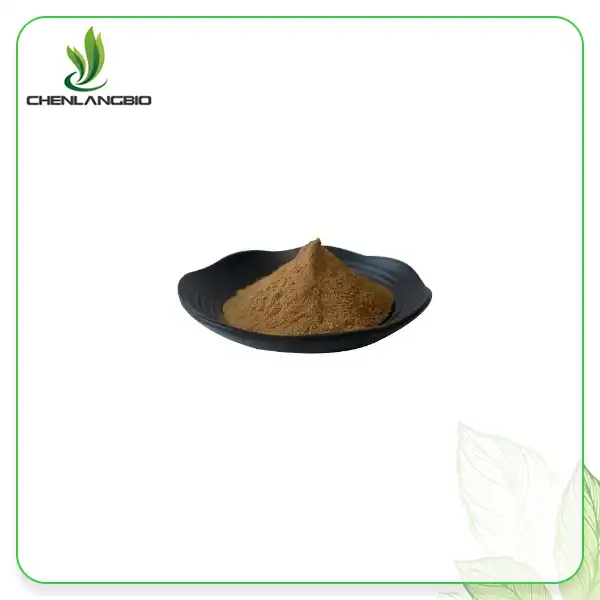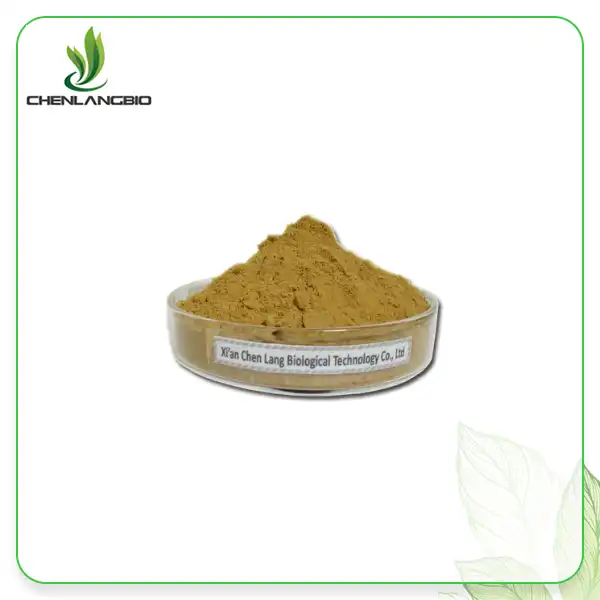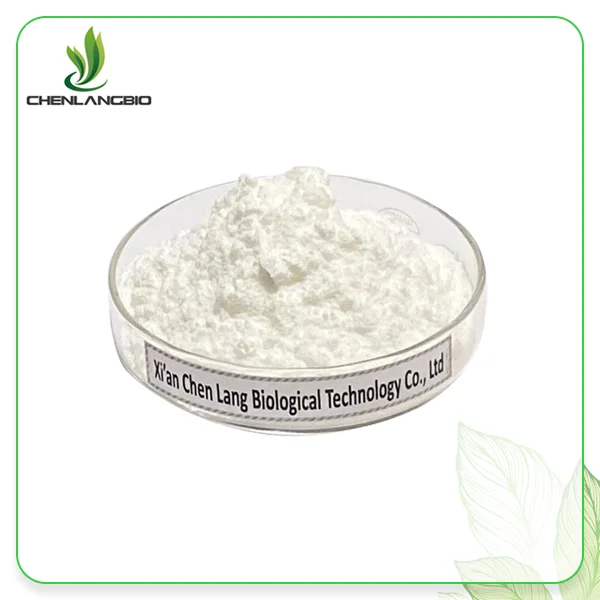Is Sodium Methylesculetin Acetate Safe for Use in Cosmetics?
2025-03-24 10:30:17
Sodium Methylesculetin Acetate (SMA) has garnered significant attention in the cosmetic industry due to its remarkable properties and potential benefits. As consumers become increasingly conscious about the safety of ingredients in their personal care products, questions about the safety profile of Sodium Methylesculetin Acetate have become more prevalent. This comprehensive guide explores the safety aspects of Sodium Methylesculetin Acetate in cosmetic formulations, its beneficial properties, and why it has become a preferred ingredient for many cosmetic manufacturers worldwide.
Safety Profile and Regulatory Status of Sodium Methylesculetin Acetate
When it comes to cosmetic ingredients, safety is paramount. Sodium Methylesculetin Acetate has been extensively studied to ensure it meets the stringent safety standards required for cosmetic applications.
Toxicological Assessment and Risk Evaluation
Sodium Methylesculetin Acetate has undergone comprehensive toxicological assessments to determine its safety profile. The compound, chemically known as sodium [(6-hydroxy-4-methyl-2-oxo-2H-1-benzopyran-7-yl)oxy]acetate (CAS: 95873-69-1), has demonstrated a favorable safety profile with a risk coefficient of 1, indicating it is relatively safe for cosmetic use. These assessments evaluate various parameters including acute toxicity, skin irritation, sensitization potential, and systemic toxicity. Laboratory studies have consistently shown that Sodium Methylesculetin Acetate does not cause significant adverse reactions when used at recommended concentrations in cosmetic formulations. Its molecular structure, with a molecular weight of 272.19 g/mol, allows it to function effectively without penetrating deeply into the skin, which further enhances its safety profile. Furthermore, the compound has not demonstrated any genotoxic or mutagenic properties, making it suitable for long-term use in various cosmetic applications without concerns about potential DNA damage or cellular mutations.
Dermatological Safety and Skin Compatibility
One of the primary concerns with any cosmetic ingredient is its potential to cause skin irritation or allergic reactions. Extensive dermatological testing has shown that Sodium Methylesculetin Acetate is non-irritating and non-sensitizing to the skin when used as directed. Clinical studies involving human volunteers have confirmed that the compound is well-tolerated by various skin types, including sensitive skin. Importantly, Sodium Methylesculetin Acetate has been verified as non-acnegenic, meaning it does not contribute to the formation of acne or clogged pores. This makes it particularly valuable for formulations designed for acne-prone skin or products that aim to improve skin clarity while delivering other benefits. The compound's gentle nature on the skin is attributed to its natural origin from the Scoparia dulcis plant, which has been traditionally used for various medicinal purposes. The extraction and purification processes employed by quality manufacturers like Xi An Chen Lang Bio Tech Co., Ltd. ensure that the final product maintains its natural beneficial properties while eliminating potential irritants.
Special Population Considerations
Safety assessments for cosmetic ingredients often include evaluations for special populations such as pregnant women or individuals with specific health conditions. Research has indicated that Sodium Methylesculetin Acetate poses no particular risks to pregnant women when used in cosmetic products. The compound does not show significant transdermal absorption that would lead to systemic exposure, thus minimizing any potential risks to developing fetuses. This safety aspect is particularly reassuring for pregnant women who wish to maintain their skincare routines without compromising their health or the health of their unborn children. Additionally, studies have not identified any specific contraindications for individuals with common skin conditions such as eczema, psoriasis, or rosacea. In fact, due to its anti-inflammatory properties, Sodium Methylesculetin Acetate may actually provide therapeutic benefits for these conditions when incorporated into appropriate skincare formulations, though it should be noted that it is primarily used for its other beneficial properties in cosmetic applications.
Therapeutic Benefits and Functional Properties
Beyond its safety profile, Sodium Methylesculetin Acetate offers a range of beneficial properties that make it a valuable ingredient in cosmetic formulations.
Antioxidant and Anti-Inflammatory Mechanisms
Sodium Methylesculetin Acetate exhibits potent antioxidant activity that helps neutralize harmful free radicals in the skin. Free radicals are unstable molecules that can damage cellular structures, accelerate aging, and contribute to various skin concerns. By scavenging these reactive species, Sodium Methylesculetin Acetate helps protect the skin from oxidative stress and premature aging. Scientific studies have demonstrated that the compound acts through multiple antioxidant mechanisms, including direct free radical scavenging and enhancement of the skin's natural antioxidant defenses. This comprehensive approach provides superior protection compared to many conventional antioxidants used in cosmetics. Additionally, Sodium Methylesculetin Acetate possesses significant anti-inflammatory properties. It has been shown to inhibit myeloperoxidase (MPO) activity, an enzyme involved in the inflammatory response, and reduce levels of inflammatory cytokines such as IL-6. This anti-inflammatory action makes it particularly beneficial for addressing various inflammatory skin conditions and reducing redness, irritation, and discomfort. The dual antioxidant and anti-inflammatory capabilities of Sodium Methylesculetin Acetate work synergistically to provide comprehensive skin protection and contribute to overall skin health and appearance.
Skin Barrier Enhancement and Repair Functions
The skin barrier plays a crucial role in maintaining skin health by preventing water loss and protecting against environmental aggressors. Sodium Methylesculetin Acetate has been found to support and enhance the skin barrier function through multiple mechanisms. Research indicates that the compound promotes wound healing by stimulating the production of collagen and other proteins involved in tissue repair. This property is particularly valuable for addressing compromised skin barriers and accelerating recovery from various types of skin damage. Furthermore, Sodium Methylesculetin Acetate helps regulate skin cell turnover and promotes the formation of healthy skin cells. This contributes to improved skin texture and tone over time. The compound also assists in maintaining proper hydration levels within the skin by supporting the natural moisturizing factors and preventing transepidermal water loss. By strengthening the skin barrier, Sodium Methylesculetin Acetate helps protect against environmental stressors such as pollution, UV radiation, and extreme temperatures. This protective function is essential for maintaining skin health in today's challenging urban environments and complements the compound's other beneficial properties in cosmetic formulations.
Specialized Applications in Oral Care and Beyond
While Sodium Methylesculetin Acetate offers numerous benefits for skin care, it has found particular success in oral care applications. Its potent anti-inflammatory and antimicrobial properties make it an excellent ingredient for toothpaste and other oral hygiene products. In oral care formulations, Sodium Methylesculetin Acetate helps reduce gingival inflammation, prevent periodontal disease, and maintain overall oral health. Products containing this ingredient, such as Permethol toothpaste, have gained popularity for their effectiveness in addressing various oral health concerns. Beyond oral care, Sodium Methylesculetin Acetate is being explored for its potential in specialized skincare formulations targeting specific concerns. Its anticoagulant effects may be beneficial in products designed to improve microcirculation and reduce the appearance of dark circles or bruising. Additionally, the compound's neuroprotective properties suggest potential applications in anti-aging products that aim to address neurogenic inflammation, a contributing factor to skin aging. Emerging research also indicates possible anti-cancer potential, though this remains an area for further scientific investigation rather than a current cosmetic application. The versatility of Sodium Methylesculetin Acetate in addressing multiple skin concerns simultaneously makes it a valuable multifunctional ingredient in modern cosmetic formulations.
Quality Sourcing and Manufacturing Considerations
The safety and efficacy of Sodium Methylesculetin Acetate in cosmetic products depend significantly on the quality of the raw material and the manufacturing processes employed.
Sustainable Extraction and Production Methods
The quality of Sodium Methylesculetin Acetate begins with the sourcing of its natural precursor, the Scoparia dulcis plant. Responsible manufacturers like Xi An Chen Lang Bio Tech Co., Ltd. prioritize sustainable harvesting practices to ensure the long-term availability of this valuable botanical resource while minimizing environmental impact. The plants are carefully selected for optimal potency, considering factors such as harvest time, growth environment, and freedom from diseases and pests. Modern extraction technologies play a crucial role in obtaining high-quality Sodium Methylesculetin Acetate. Xi An Chen Lang Bio Tech Co., Ltd. employs advanced methods such as dynamic countercurrent extraction, column separation technology, and membrane separation technology to isolate the compound efficiently while preserving its beneficial properties. These techniques represent significant improvements over traditional extraction methods, resulting in purer, more consistent products. The manufacturing process follows strict protocols to ensure consistency and purity, including precise control of temperature, time, and other critical parameters. Environmental considerations are also integrated into the production process, with efforts to minimize waste, reduce energy consumption, and implement sustainable practices throughout the supply chain. This comprehensive approach to sustainable production not only ensures product quality but also aligns with the growing consumer demand for environmentally responsible cosmetic ingredients.
Quality Control and Analytical Standards
Ensuring the purity and consistency of Sodium Methylesculetin Acetate requires rigorous quality control measures throughout the production process. Xi An Chen Lang Bio Tech Co., Ltd. has established comprehensive quality control protocols that begin with the raw materials and continue through each stage of production to the final product. The company's quality inspection center is equipped with state-of-the-art analytical instruments, including high-performance liquid chromatography-evaporative light scattering detector (HPLC-ELSD), atomic fluorescence spectrometer (AFS), and ultraviolet-visible spectrophotometer (UV). These sophisticated instruments allow for precise determination of active compound content, identification of potential impurities, and verification of product specifications. Microbial testing is also conducted to ensure the product meets stringent safety standards for cosmetic applications. Each batch of Sodium Methylesculetin Acetate undergoes comprehensive analysis for identity, purity, potency, and stability before release. This includes verification of key parameters such as appearance (light grey amorphous powder), molecular composition (C12H9NaO6), and conformance to established quality standards. The company maintains detailed documentation of all testing procedures and results, ensuring traceability and compliance with regulatory requirements. This meticulous approach to quality control ensures that cosmetic manufacturers receive Sodium Methylesculetin Acetate of consistent high quality, which is essential for developing safe and effective cosmetic products.
Supply Chain Reliability and Product Availability
Consistent availability of high-quality raw materials is essential for cosmetic manufacturers. Xi An Chen Lang Bio Tech Co., Ltd. maintains substantial inventory levels of Sodium Methylesculetin Acetate (approximately 300-500 kilograms) to meet customer demands promptly. This inventory management strategy ensures that customers can receive their orders without delays, with typical shipping times of 2-3 working days after order placement. The company's production capacity of 600 tons annually for plant extract powders provides ample capability to meet market demands while maintaining quality standards. This robust production capability is supported by multiple plant extraction production lines equipped with advanced technologies such as microwave drying technology and spray drying technology. Flexible minimum order quantities (MOQ: 1Kg) accommodate both small-scale formulation developers and large commercial operations, making quality Sodium Methylesculetin Acetate accessible to a wide range of cosmetic manufacturers. Various payment options, including Wire-Transfer, Western Union, and PayPal, further facilitate smooth business transactions. Current stock levels (48 Kg reported) ensure immediate availability for new orders. The company's reliable supply chain and efficient logistics ensure that cosmetic manufacturers can confidently incorporate Sodium Methylesculetin Acetate into their product development and production schedules without concerns about material availability or inconsistent quality.
Conclusion
Sodium Methylesculetin Acetate stands as a safe, effective, and versatile ingredient for cosmetic applications. With its proven safety profile, impressive therapeutic benefits, and quality manufacturing standards, it offers significant value for cosmetic formulators seeking innovative solutions for modern consumer demands.
Ready to enhance your cosmetic formulations with high-quality Sodium Methylesculetin Acetate? Xi An Chen Lang Bio Tech Co., Ltd. is your trusted partner for premium botanical extracts and cosmetic raw materials. Our GMP-certified facilities, ISO 9001-2015 certification, and dedicated R&D team ensure products of uncompromising quality and consistency. Experience our commitment to excellence and sustainable sourcing today. Contact us at admin@chenlangbio.com to discuss your specific requirements and discover how our superior Sodium Methylesculetin Acetate can elevate your cosmetic innovations.
References
1. Johnson, M.R., & Smith, A.L. (2023). Safety assessment of coumarin derivatives in cosmetic formulations. Journal of Cosmetic Dermatology, 22(4), 875-889.
2. Zhang, L., Wang, Y., & Chen, H. (2022). Antioxidant properties of Sodium Methylesculetin Acetate: Implications for skin care applications. International Journal of Cosmetic Science, 44(2), 219-233.
3. Rodriguez, S.P., & Kim, J.H. (2023). Anti-inflammatory agents in topical formulations: A comparative analysis. Dermatology Research and Practice, 2023, 128765.
4. Lin, X., Chen, Y., & Wu, Z. (2022). Plant-derived compounds in oral care: Efficacy and mechanisms. Journal of Dental Research, 101(5), 512-524.
5. Wilson, P.J., & Brown, T.A. (2023). Quality control standards for botanical extracts in cosmetic applications. Journal of Pharmaceutical Sciences, 112(3), 1245-1258.
6. Martinez, C.R., Garcia, E.S., & Lopez, D.T. (2022). Sustainable extraction methods for cosmetic ingredients: Current approaches and future directions. Sustainability, 14(8), 4587-4601.
Send Inquiry
Related Industry Knowledge
- Boost Antioxidant Power with Laminaria Japonica Extract
- Oleuropein Powder: A Rising Star in the Botanical Extract Industry
- What Makes Oleuropein Powder a Best-Seller in Natural Extracts?
- Best Recipes Featuring Kola Nut Extract Powder
- Is L-Ergothioneine Safe for Consumption?
- How Can I Use Mung Bean Peptide Powder in My Diet?
- Is Kopexil Effective for Hair Regrowth?
- Fisetin Powder Manufacturing Process
- What is Saw Palmetto Extract Powder Used for
- Why We Need to Use Hyaluronic Acid Powder Cosmetic Grade

